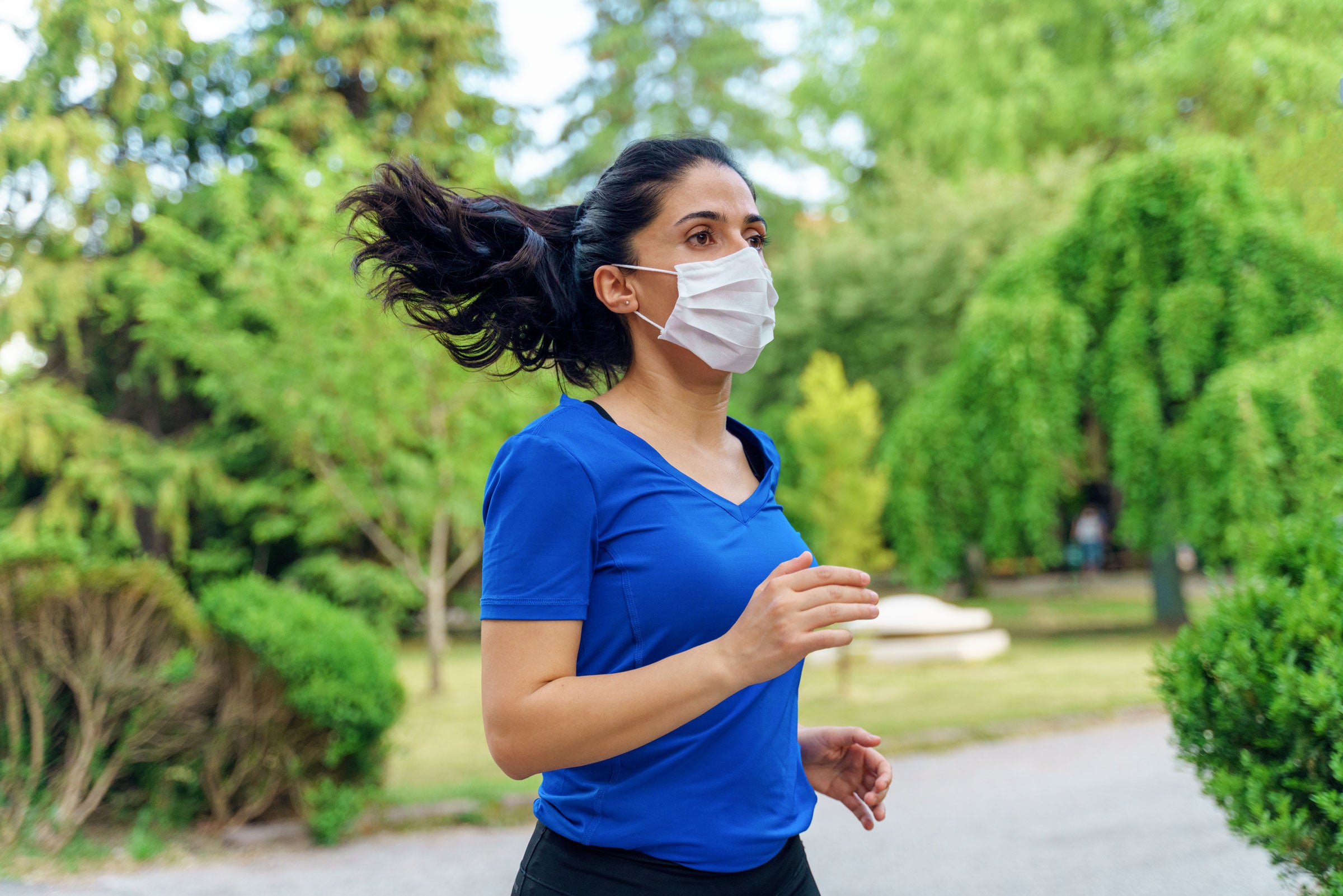What Experts Say About Exercising After a COVID-19 Diagnosis

(Photo: Getty Images)
When Jordan D. Metzl, MD, and his colleagues at the HSS Sports Medicine Institute published their guidelines to returning to activity after recovering from COVID-19 in August, he never imagined the response he’d get from patients.
“I’ve been surprised at how many people have reached out to me,” said Dr. Metzl. He calls these individuals long haulers, people who are still having mild to moderate symptoms three to five months later. “Maybe they just didn’t know where to go, people weren’t talking about it. There are more people out there with these issues than I even realized.”
After working with athletes in their own practices, the HSS team knew it was important to create a framework for recreational athletes who had mild to moderate coronavirus, to understand how to best return to activity safely. This was especially important after realizing how recovery looked vastly different for different individuals, with some recovering quickly and others taking months even if they only had mild symptoms. Similarly, the American College of Cardiology Sports and Exercise released their return to play guidelines back in May, directed at competitive athletes and highly active recreational athletes. Because of the unpredictable nature of the virus, both sets of guidelines take a cautious stance.
What You Need to Know
According to the CDC, scientists have learned “that many organs besides the lungs are affected by COVID-19 and there are many ways the infection can affect someone’s health.” In particular, they are watching how the virus interacts and causes damage to the heart. The inflammation and damage they are worried about is called myocarditis.
“We’re still not entirely sure about the underlying mechanisms as it relates to all the cardiac injury that we’re seeing in hospitalized patients,” said Jonathan Kim, MD, a sports cardiologist and co-author of the ACC return to play guidelines.
To avoid putting stress on the heart before it’s ready, endurance athletes shouldn’t plan to pick up where they left off in their training. In the guidelines for competitive and highly active recreational athletes from the ACC, two weeks of full recovery is recommended with slow return to activity and evaluation by a medical professional. They also state that if you test positive for the virus, but are asymptomatic, it’s also best to follow these guidelines after quarantining per CDC standards.
“If you test positive in the setting of being exposed, the idea is to wait because we know that when symptoms evolve they can sometimes evolve pretty dramatically after the first week. Once you know you have it, you need to socially isolate and not exercise,” said Dr. Kim.
He also recommended athletes pay attention if clear cardiac symptoms arise when they return to exercising after COVID-19, such as new chest tightness, excessive shortness of breath, feeling winded during a workout that is normally easy, feeling lightheaded, or passing out. Those are all indications that you are not ready to be running again.

The guidelines for recreational athletes vary slightly based on the types of symptoms the individual may have had (pulmonary, cardiac, musculoskeletal, etc.), but in general, they recommend returning to running after COVID-19 using the 50/30/20/10 rule. In your first week back, reduce your normal training load by 50 percent. If that is comfortable and you’re not experiencing new symptoms, the next week reduce by only 30 percent, followed by 20 percent, and 10 percent in the fourth week. By the fifth week, you can resume your regular training.
“If you have a body system that’s been infected, it’s important to gradually tax that system to see where you are,” said Dr. Metzl.
“If you try to run too hard too soon, you are only doing yourself a disservice,” said Emily Stoneman, MD, a physician and infectious disease expert at the University of Michigan. “Giving your body time to heal will offer much more benefit in the long term than trying to push yourself when you are not fully recovered.”
Both these groups that set out guidelines for returning to activity recognize that, with the current uncertainty, their recommendations will likely change in the future. “I think we all submit that these recommendations will change,” said Dr. Kim. “As it relates to the conservative nature, time will tell.”
Lessons Beyond Coronavirus
Some of this advice can also be used to take us into flu season. “Even before COVID I was always giving the advice that when you’re under the weather, that’s the time when you shouldn’t be going out and pushing yourself to the limits and very hard. There’s a whole new introduced variable with COVID-19, but it emphasizes the point that you always need to let your body recover if you have a viral infection,” said Dr. Kim.
Dr. Metzl pointed out that it can be tough convincing runners, who are used to pushing through illness, bad weather, and stress, to take a break. “We’re just programmed to run through everything,” he said. “Which honestly, in life in general, is probably a great attribute. We get stuff done. We don’t let stuff stand in our way.” But he emphasized that now is not the time to just do what endurance athletes do. It’s important to be methodical in your approach to exercise after COVID-19. “As a sports doctor who’s seen patients that have all different issues as well as some of these post-COVID issues, I think this is a time where you need to really temper that runner mindset and put it in context with the fact that that’s not necessarily the best thing for runners right now. You want to be mindful, you want to be careful. You want to be more careful than you’ve been before.”
Endurance athletes can take this as an opportunity to tune into what their body is telling them, to practice being aware. “I think the most important advice is to listen to your body and back off if necessary,” said Dr. Stoneman.
But if you genuinely feel good and have no reason to believe you are sick, there should be nothing that stops you from getting out and enjoying a socially distanced workout. “Keep on running,” Dr. Stoneman urged. “Even though most of the races are canceled, we are all training for life and our own sanity during these challenging times.”